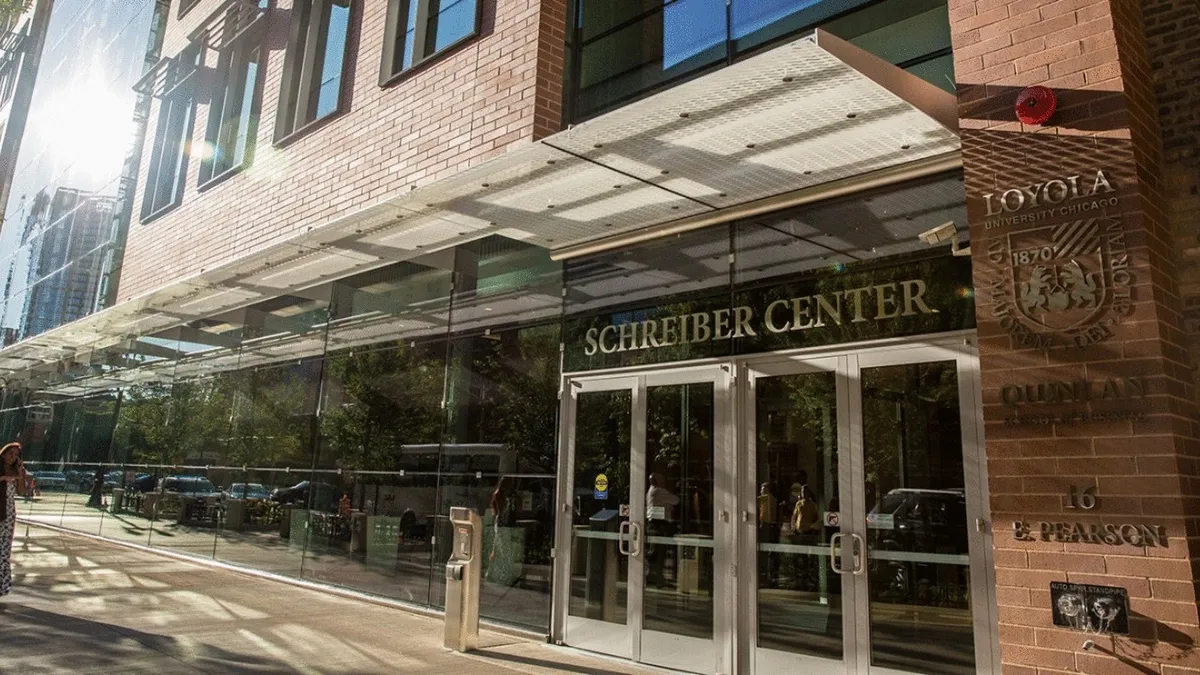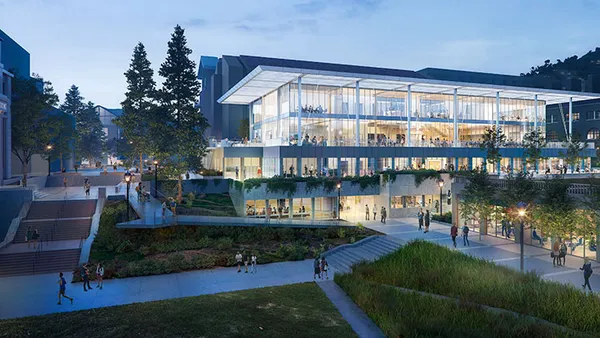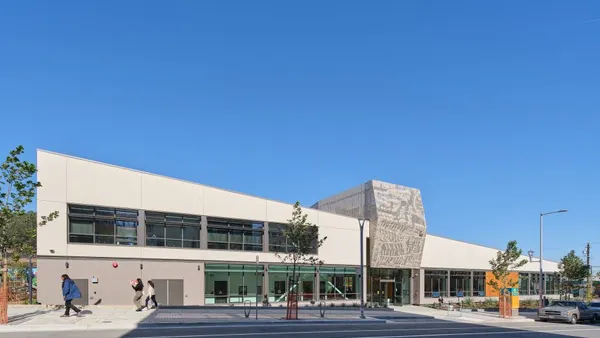Dive Brief:
- Loyola University has deployed an artificial intelligence-driven HVAC technology alongside an automated emissions reduction algorithm at the Schreiber Center, a 10-story, mixed-use building spanning 150,000 square feet used by its Quinlan School of Business in Chicago. The system is part of a yearlong proof-of-concept project to further decarbonize the building.
- The university integrated BrainBox AI’s system with its existing HVAC controls and used environmental technology nonprofit WattTime’s marginal emissions data as a signal to understand the environmental impact of electricity use at different times, BrainBox AI said in a case study. This effort resulted in a consistent 10% reduction in both HVAC-related energy costs and carbon dioxide equivalent emissions annually. It also resulted in a 15% reduction in carbon emissions during marginal emissions events, including periods of renewable energy curtailment on the grid, when used in conjunction with WattTime’s algorithms, according to the results of the case study announced in a May 8 news release.
- “The novel application of autonomous AI to the HVAC control systems in the built environment is exciting given its scalability, low upfront costs and impact relative to decarbonization goals,” BrainBox AI CEO Sam Ramadori said in an interview. “What is even more exciting in this case study is [that] we can leverage autonomous AI to change the behavior of HVAC systems so that they are consuming electricity at the times of day when it is generated more by renewables than fossil fuels.”
Dive Insight:
As renewable energy becomes a bigger part of the total U.S. electricity supply, effectively managing energy distribution and consumption becomes increasingly crucial to prevent the waste of renewable energy resources, BrainBox AI said in the May 8 news release.
WattTime’s marginal operating emissions rate signal technology analyzes electricity grids in detail, predicting times when there is an excess of renewable energy, BrainBox AI said. During these periods of grid congestion, the transmission of surplus energy from renewable sources is reduced or halted — a practice known as curtailment, which contributes to concerns about energy supply and environmental and financial issues that arise from wasted renewable energy, BrainBox AI said.
In a randomized controlled trial, the study compared three modes of the building management system, BrainBox AI said. In addition to results from the AER algorithm running, paired with BrainBox AI’s AI for HVAC optimization algorithms, the study showed that the building itself could store extra power during renewable energy curtailment events on the grid and subsequent four-hour periods after the curtailment, per the release.
By identifying moments of low marginal emissions through WattTime’s empirically based marginal emissions model, the electricity consumption of the building could be “strategically shifted” to times when renewable energy is abundant but not fully utilized due to curtailment, the case study says.
The study notes that during these low-emission events, the space temperature set point was slightly reduced, effectively pre-cooling the building before the set point was returned to normal. This enabled the building to act as a thermal battery, storing energy in the form of “coolness” that could be utilized later, resulting in lower energy consumption during the “dirtier, predominantly coal and gas-powered energy periods,” the case study says.
This is the first project that has resulted from BrainBox AI’s partnership with WattTime, a spokesperson for BrainBox AI said.
Last year, the results of this project were recognized by U.S.-based Center for the Built Environment as well as in an ASHRAE Guide on the Role of Grid Interactivity in Decarbonization, BrainBox AI said.
















